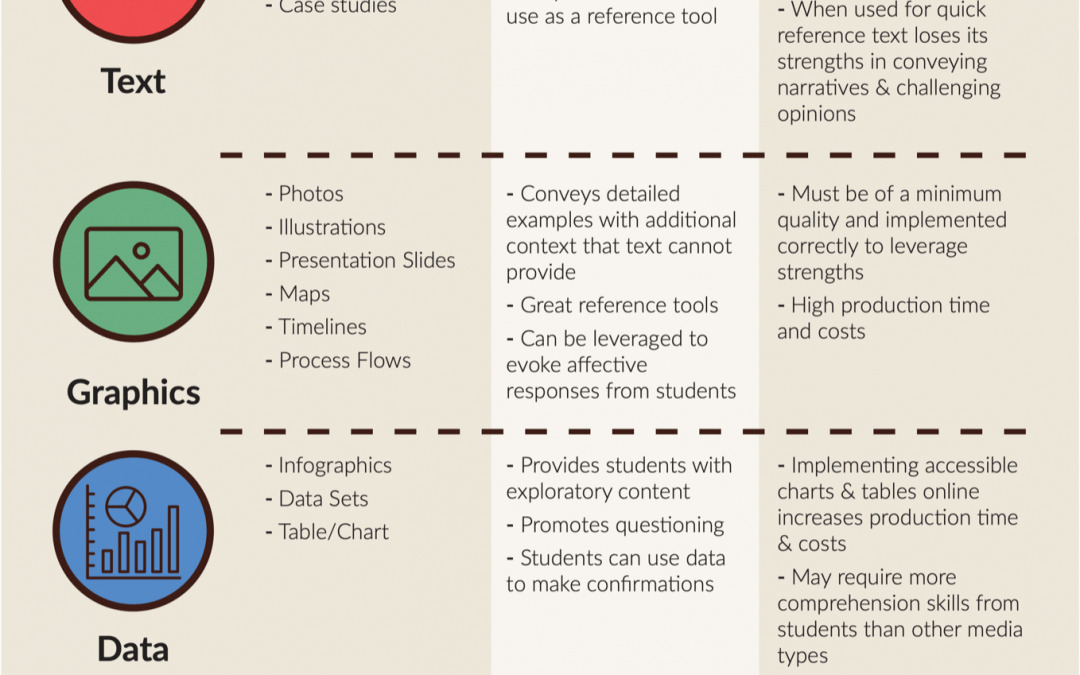Take a moment and think about the content in your course. Not the specific information contained in your course content but the actual media itself. What comes to mind? Did you think about a textbook? Maybe some articles and a video you found on youtube. Or, maybe there’s a podcast episode you like students to listen to. You’ve probably curated a variety of media modalities to cover the content you need for your course. It’s likely you’ve even created some of the media yourself.
When you’re choosing media to include in your class what factors drive your decision making? Of course, you need it to have relevantrelative content. But why use video over a podcast? When should you leverage text over “more engaging” media modes?
With so many questions and choices available to faculty, how do you know which types of media are best for your course content? The short answer is there isn’t a universal best practice for this. Your students, the learning objectives you have for them, your assessment strategy, and plenty of other things can all impact what is “best”. An instructional designer can help consider all of these things to recommend some best approaches.
“Cool but how does that non-answer help me right now” would be a very fair and understandable reaction to that last paragraph. While I think it would be awesome to work with every faculty member to help them figure out their content needs I also understand the very real obstacle of limited time and resources for both designers and faculty. Of course we didn’t want that to stop faculty from being able to make some informed decisions about the content in their course. So we created a quick reference guide to help faculty get started.
This document breaks down media into a few major categories and provides a list or examples, along with their strengths, and weaknesses. While not as robust as recommendations from a bonafide living breathing designer, this document provides a quick orientation to the major modalities you can leverage in a class.
One of the most commonly requested media types from faculty is video. It’s flashy, it moves, it can even have sound! But it can also be time consuming and costly to produce something of high quality. This doesn’t mean video is bad, video can be amazing in a class. But you have to know the best ways to leverage this. “But Taylor, why do you keep hyping up stuff just to turn around and put up another obstacle?” Again, a very fair response. That’s why we’ve developed a video flowchart that’s included on the backside of our media guide. Need to decide if and when you should use video in your class? Need to know what kind of video to leverage? This flowchart is a great starting place and can help you find what types of video are commonly used in education along with what could work best (along with what you might want to avoid) when using video in your course.
You can download a pdf version right here: Content_Handout_Live_02
And if you have any questions or would like to talk about working with an instructional designer you can contact us at CETL@gsu.edu

